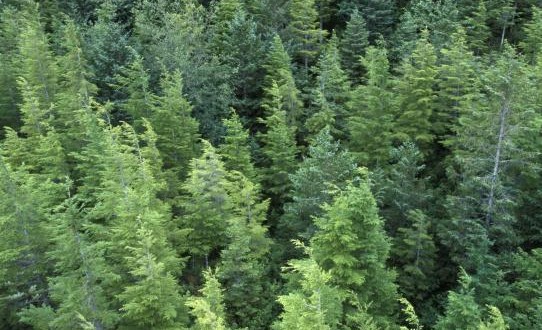Researchers say they have some good news about global warming and its impact on British Columbia’s forests, especially about the environment’s recovery from the devastating mountain pine beetle outbreak more than a decade ago..
The finding was made by a group of scientists working together on the Forestry Carbon Management Project—an initiative of the University of Victoria-led Pacific Institute for Climate Solutions (PICS).
Normally, forests function as what climate scientists call “carbon sinks,” which means that as trees grow, they “breathe” in carbon dioxide (CO2) and store carbon in their leaves, stems, branches and roots. But the MPB epidemic that started in the late 1990s and continued through the 2000s reversed this situation, causing much more carbon to be released back into the atmosphere as the dead trees rotted. With more than 18 million hectares of forests affected, the scale of rot was so bad that it turned BC’s forests from a carbon sink into a “carbon source”—a net producer of greenhouse gases just like a car, a coal-fired power plant, or a cement factory.
However, tree mortality has declined and these forests are now recovering from the outbreak.
“By 2020, the enhanced growth due to climate change and increasing CO2 more than compensates for the carbon loss from dead rotting trees,” says lead researcher Vivek Arora of the Canadian Centre for Climate Modelling and Analysis, a division of Environment and Climate Change Canada located at UVic. “This turn-around will happen much sooner than we had imagined.”
Climate change is accelerating this recovery. It is projected to make BC warmer, but also parts of it wetter due to increased precipitation.
Meanwhile, the greenhouse gas CO2 produces a “fertilization effect” that increases photosynthesis. Taken together, these warmer, wetter, more CO2–rich conditions allow high-latitude forests to recover faster from harvest, fire and insect disturbances than they otherwise would. This boost in growth in turn allows for greater storing of carbon in vegetation, forest floor litter and soil.
Global warming can, however, also make some regions drier making their forests more vulnerable to fires and drought-induced mortality. But using a combination of computer models and historic observations, the PICS research team has found that by the end of the decade, this enhanced forest growth substantially outpaces the reduced carbon uptake by forests that has been caused by the pine beetle outbreak, even after taking into account the increased forest fires.
“Ironically, while climate change can make insect outbreaks more likely, it can also help our forests recover more quickly from those outbreaks,” says Werner Kurz, senior research scientist at Natural Resources Canada and head of PICS’ five-year Forest Carbon Management Project, which investigates how forests can contribute to slowing global warming as well as adapt to climate change.
The scientists’ findings have been published in Geophysical Research Letters, a peer-reviewed scientific journal of the American Geophysical Union. Like other modelling studies, the results are subject to caveats associated with model and data limitations. PICS is a collaboration of BC’s four-research intensive universities.
Agencies/Canadajournal
 Canada Journal – News of the World Articles and videos to bring you the biggest Canadian news stories from across the country every day
Canada Journal – News of the World Articles and videos to bring you the biggest Canadian news stories from across the country every day



